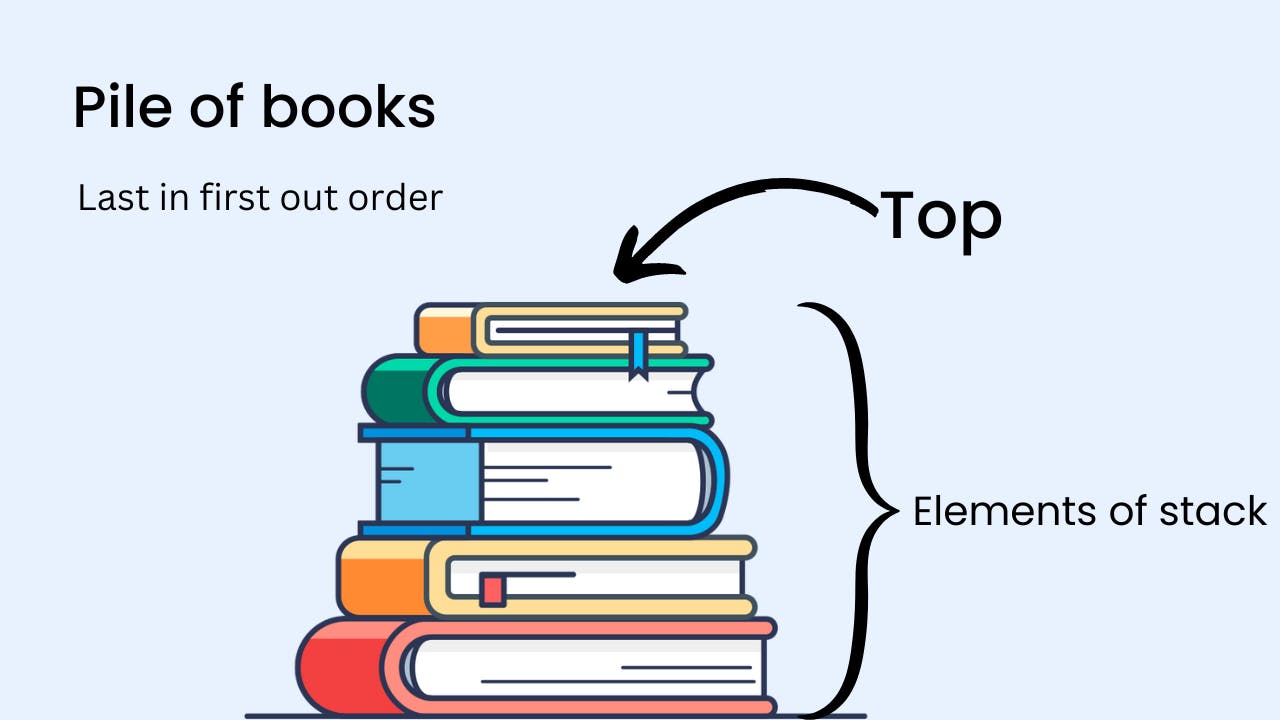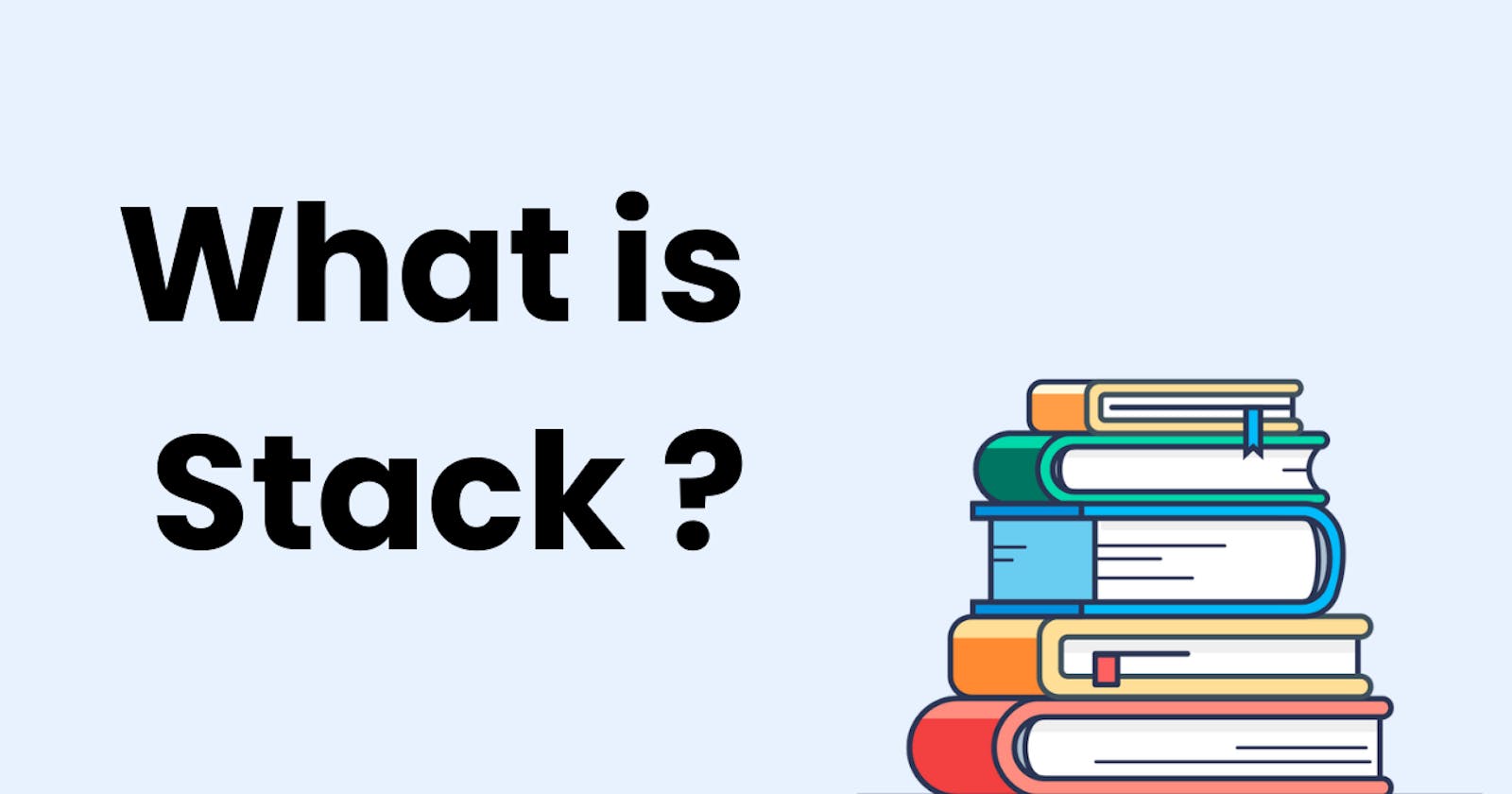Stack
A stack is a linear data structure, where "linear" refers to the order in which the items are arranged. The two operations that can be performed on a stack data structure are push and pop. Push operation adds an element to the top of the stack, while pop action removes an element from the top of the stack.
In stack elements are stored in Last in First Out Order , that means elements are added to the top of the stack and remove from top of the stack.
Example - Pile of books

Advantages of Stack
It is used in many virtual machines such as jvm.
Stacks allows control allocation of memory and deallocation.
Stack helps in data management.
Stack helps in systematic memory management.
Disadvantages of Stack
Stack memory has limited size.
Total size must be defined in advance.
Random access is not possible on the stack.
The stack will fall outside of the memory area, which might lead to an abnormal termination.
Common Stack Operations
- push(): A push is the action of adding an element to a stack. The overflow circumstance occurs when the stack is full or finished.
- pop(): Deleting an element from a stack is referred to as a pop. The absence of any element indicates that the stack is empty. The underflow state is what we refer to as here.
- isFull(): It aids in determining whether or not the stack is full.
isEmpty(): This function aids in determining whether or not the stack is empty.
peek(): returns the element at the specified location.
- count(): This function is used to determine how many elements are present in a stack overall.
- display(): This method is used to print every element in the stack.

